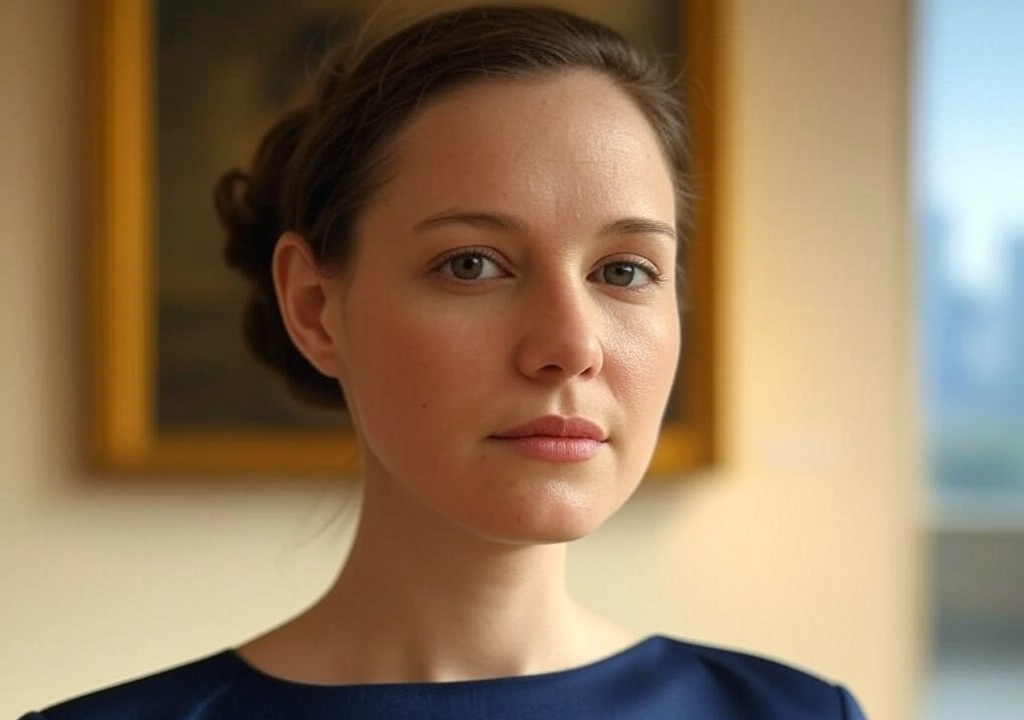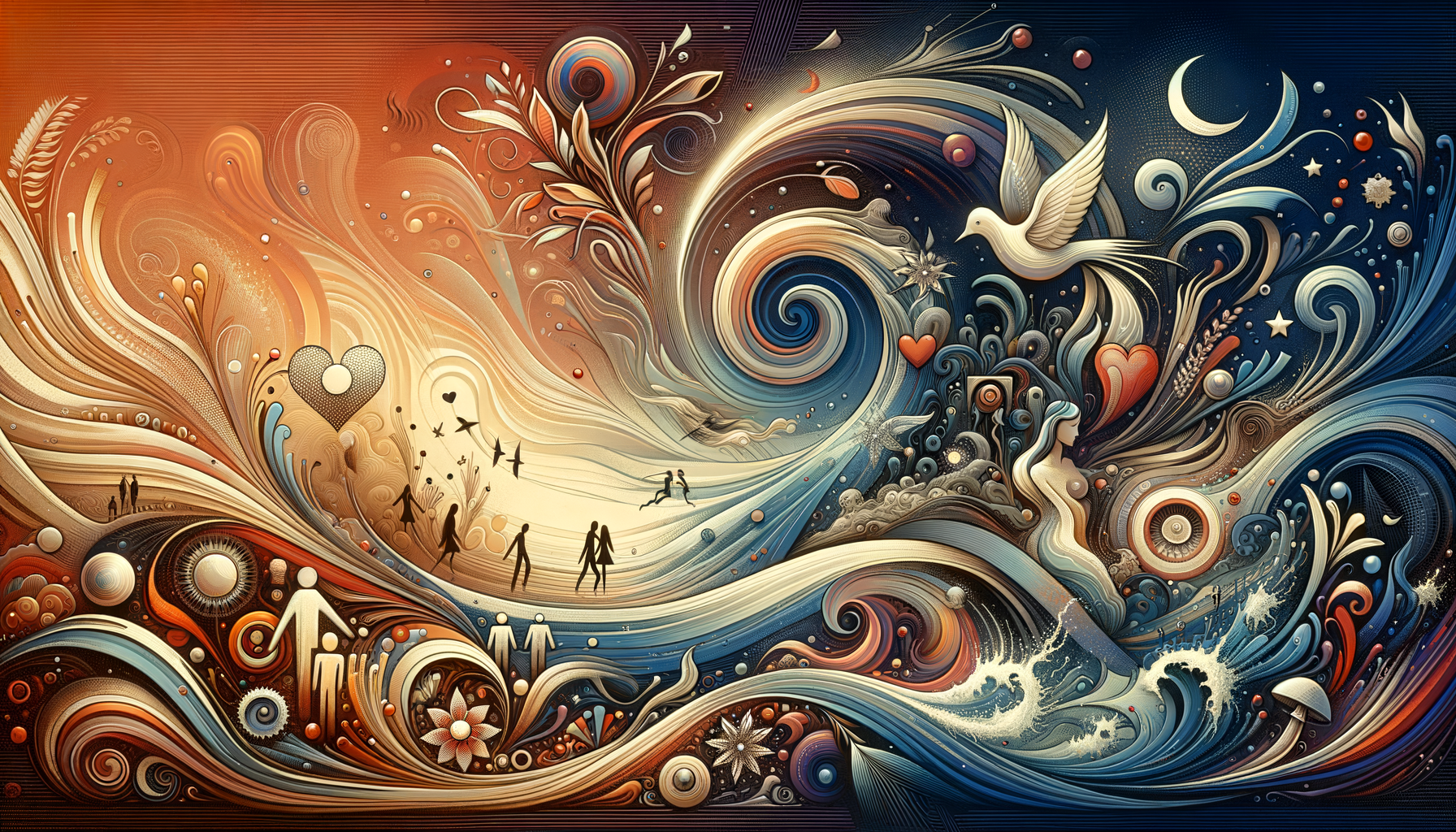The Introduction Stage: Family, Art, and Misguided Romance
Every family has its characters—the eccentrics, the know-it-alls, the storytellers who embellish more than they remember. Mine? A mix of mythmakers and curators of drama, with a tendency toward the operatic (fitting, considering my mother’s great aunt once claimed to have sung backup for Maria Callas—completely unverifiable, though she owned enough vintage ballgowns to make it plausible). Growing up on Manhattan's Upper East Side amidst art installations and perfectly poured Manhattans meant that storytelling wasn’t just something we did; it was the way we lived.
I learned early on that in my house, everyone was both canvas and curator—a masterpiece of contradictions on display, and the one waving the artist’s brush. Family dinners weren’t just meals; they were tableaus. My father, the museum curator, would weave tales from his travels with the kind of gravitas usually reserved for Churchill speeches, while my mother—the chic proprietress of a gallery—would edit his anecdotes with the sharpness of an X-Acto knife. “That wasn’t Milan in ’87, darling—it was Capri in ’85. If you’re going to exaggerate, at least do it properly.”
These nightly performances weren’t mere exercises in familial bragging rights—they shaped me. They gave me an appreciation for nuance, for the layered, mosaic-like quality of shared history. And, perhaps inadvertently, they prepared me for the romantic entanglements that would one day imitate the chaotic energy of those dinners.
The Stories We Tell (and the Ones We Don’t)
One tale dominated my childhood, passed down like whispered scripture: the story of Grandma Francesca and the Venetian Artist. According to family legend, sometime in the 1920s, my great-grandmother Francesca—the most beautiful woman in the tri-state area, we’ve been assured—was “discovered” by a visiting Italian artist attending a gala at The Met. Naturally, he was smitten. Who wouldn’t be? She was young, glamorous, and apparently had cheekbones you could cut marble with. He begged her to sit for a portrait and promised to immortalize her as a Madonna in oil.
This is where the details get… imaginative. Depending on which relative you ask, Francesca either:
a) Ran away with him to Italy but returned after realizing she preferred Saks Fifth Avenue to gondolas,
b) Refused him politely but allowed him to come back six months later, emotionally wrecked and obsessed with her, or
c) Flat-out fabricated the entire thing to make herself sound more interesting (which, frankly, I respect).
The portrait? Lost to time, which strikes me as a little convenient. But here’s the kicker—it doesn’t matter whether it's real. Francesca knew the art of romantic storytelling: adding mystery where there was none, peppering moments of heartbreak with glamour. She was, in essence, an accidental love coach.
Modern dating could use more Francesca. Think about it: When was the last time you met someone who told you something utterly enchanting about their past? In the world of Netflix-and-chill, where quirks get boiled down to “I like pineapple on pizza,” aren’t you craving a little mythology?
Lessons in Romance from the Museum Floor
When I worked as an assistant curator after graduating, much of my life revolved around safeguarding art. I spent hours inspecting brushstrokes, cataloging centuries-old provenance records, and debating lighting temperatures that would preserve pigments longer than most of us will be alive.
One day, while standing in front of a Monet, I overheard a couple arguing—the kind of sharp-tongued bickering that feels honed over decades. The wife was critiquing her husband’s choice of wine at dinner the night before, and he was rolling his eyes at her pronunciation of “plein air.” It was melodic in a way only deeply in-love squabbling ever is.
Mid-sentence, he surprised her by saying quietly, “I only drink Cabernet because it reminds me of the red dress you wore when we met.” She flushed crimson—matching the Monet’s Japanese bridge suddenly glowing under the skylight. He walked ahead without waiting for a response.
I saw it all from my corner of the room and had the clearest epiphany of my adult life: romance isn’t about the story you’re in right now; it’s about weaving in all the moments that made you.
Creating a Personal Mythology
Whether it’s dating, marriage, or flirty-but-loaded conversations over overpriced cocktails, we could all learn to romanticize our lives just a little. No, I’m not suggesting you invent a torrid half-tryst with a Venetian painter or start reciting sonnets on first dates (though, hey, go for it if that’s your thing). I mean intentionally crafting the stories you believe in—not to deceive, but to shine a light on something worth cherishing.
Take these cues from my family, dysfunctional but delightful, and create your own narrative tapestry:
-
Embrace the Eccentric
Remember Francesca and her Maybe-Italian lover? Sure, her story might be fiction, but that didn’t stop her from captivating everyone within a five-table radius at any gathering. Find the details that make your life just as compelling, even if they’re small. Maybe it’s the way your candlelit apartment feels like a Parisian café, or how you can’t walk past a record store without scooping up a Sinatra LP. Turn the mundane into magic. -
Blur the Lines Between Fact and Feeling
Do you have to share every unfiltered emotion on a first date? Absolutely not. But a little mystery? That’s timeless. Talk about the time you camped under the stars in Montana, even if the stars were obscured by mosquitoes the size of small planes. They don’t need to know everything. -
Own Your Awkward
My parents, on their first anniversary, got locked in a gallery after hours because my father had too much wine and tripped the alarm system. Romantic? Not exactly. Memorable? 100%. Not everything has to be cinematic, but owning life’s imperfect moments is often more endearing than pretending they never happened.
From Flirt to Familiar
These days, when I gather stories of the people I date (or, let’s be honest, don’t date for long), I think back to my family's dinner table dramas and wonder if I’m spinning enough romance into my own life. We spend so much time trying to come off flawless, crafting perfect first impressions and manicured Instagram feeds, but what sticks—what lingers—are usually the tales that break through the seams.
So why not lean into your personal mythology? Celebrate your Francesca-esque moments—the questionable decisions, the half-finished portraits—because they’re uniquely yours. The art of romance isn’t in perfection; it’s in curation. A kind of playful, messy, unapologetic curation.
From the Venetian artist to the Monet-inspired Cabernet confession, every relationship, every story, becomes part of your permanent collection. And you? You’re the curator. Make it one worth coming back to.




















